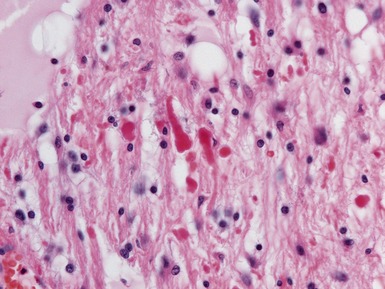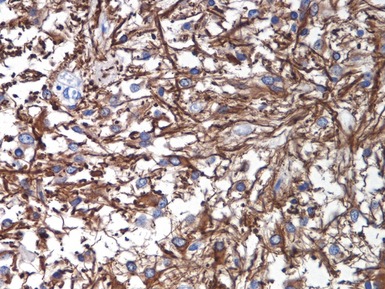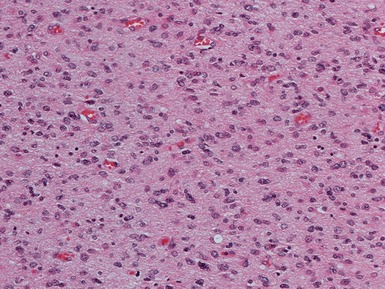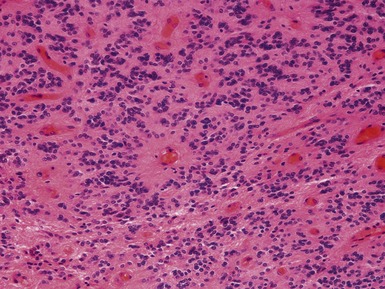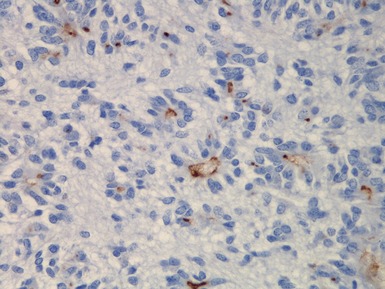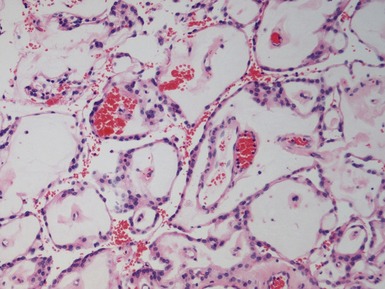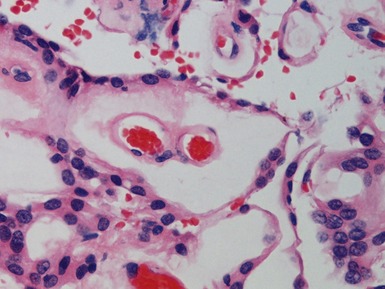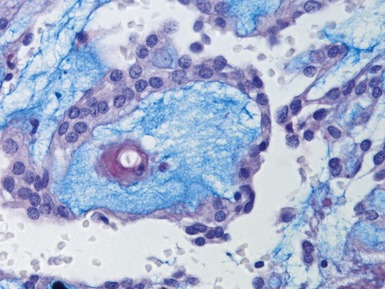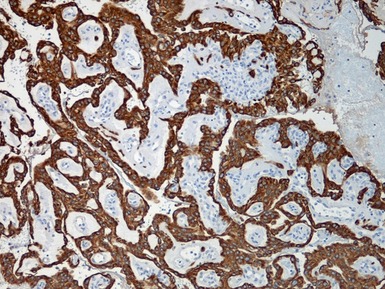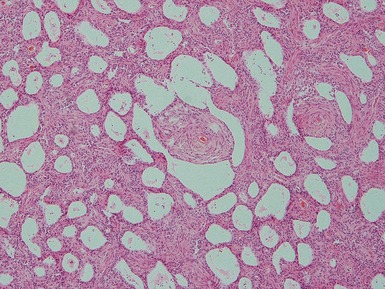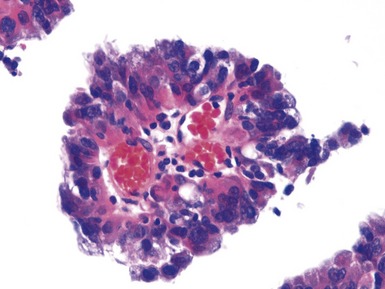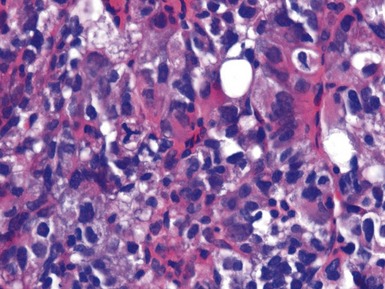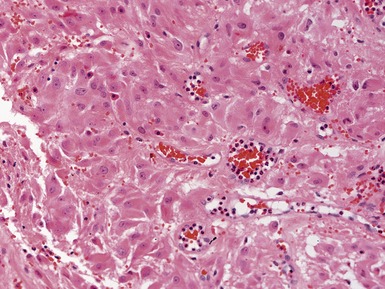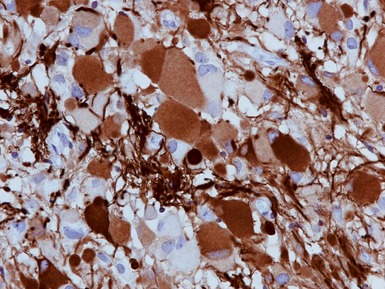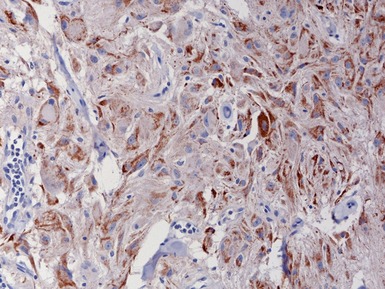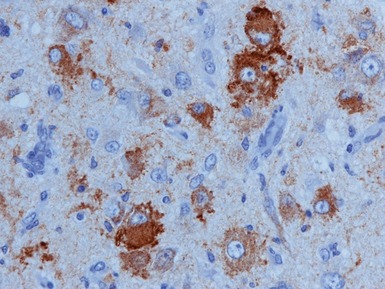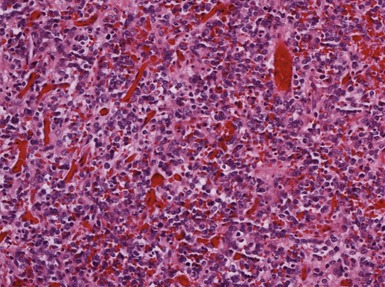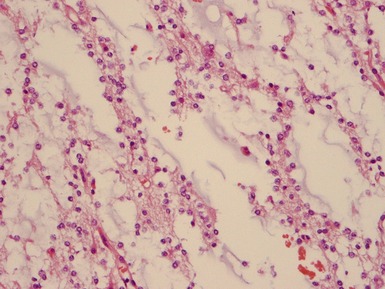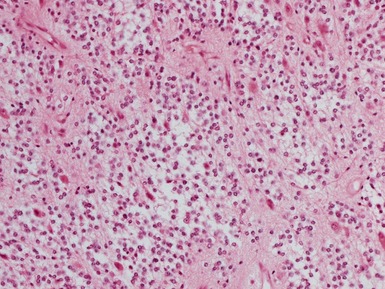CHAPTER 16 NEUROPATHOLOGY
INTRACRANIAL AND SPINAL TUMORS
Overview
Specimen handling
Role of intraoperative diagnosis
GLIOMAS
PILOCYTIC ASTROCYTOMA
Histopathological features
Diagnostically useful features
Morphological variations
Immunohistochemical staining
Differential diagnoses and pitfalls
DIFFUSE ASTROCYTOMA (Fig 16.14)
Morphological types
Immunohistochemical staining
ANAPLASTIC ASTROCYTOMA (Figs 16.15, 16.16)
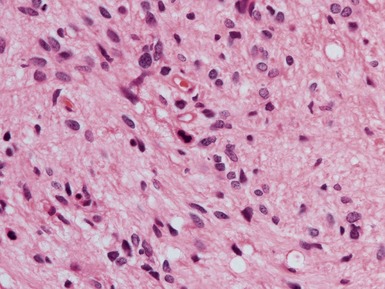
Fig 16.15 Photomicrograph of an anaplastic astrocytoma demonstrating increased cellularity and pleomorphism compared with a grade II tumor. (see Fig 16.14)

Fig 16.16 Photomicrograph of an anaplastic astrocytoma demonstrating increased cellularity, pleomorphism and mitotic activity compared with a grade II tumor. (see Fig 16.14)
GLIOBLASTOMA (Figs 16.17–16.19)

Fig 16.18 Photomicrograph demonstrating a glioblastoma with extensive tracks of pseudo-palisading necrosis.
Morphological variants
Immunohistochemical staining
Molecular diagnosis
GLIOFIBROMA
GLIOMATOSIS CEREBRI (Figs 16.20, 16.21)
PLEOMORPHIC XANTHOASTROCYTOMA
Histopathological features (Fig 16.22)
EPENDYMOMA
Histopathological features (Figs 16.26–16.28)
Differential diagnoses and pitfalls
ANAPLASTIC EPENDYMOMA (Figs 16.30, 16.31)
SUBEPENDYMOMA
Clinical features
MYXOPAPILLARY EPENDYMOMA
Histopathological features (Figs 16.32–16.34)
Differential diagnoses and pitfalls
ANGIOCENTRIC GLIOMA
Histopathological features (Figs 16.37–16.40)
Immunohistochemical staining
CHOROID PLEXUS PAPILLOMA AND ATYPICAL CHOROID PLEXUS PAPILLOMA
Histopathological features
CHOROID PLEXUS CARCINOMA
Histopathological features
OLIGODENDROGLIOMA (Fig 16.49)
Clinical features
Histopathological features
Immunohistochemical staining
ANAPLASTIC OLIGODENDROGLIOMA
OLIGO-ASTROCYTOMA AND ANAPLASTIC OLIGO-ASTROCYTOMA
SUBEPENDYMAL NODULES/SUBEPENDYMAL GIANT CELL ASTROCYTOMA
ASTROBLASTOMA
Histopathological features
NEURONAL AND MIXED GLIONEURONAL TUMORS
GANGLIOGLIOMA AND GANGLIOCYTOMA
Histopathological features (Figs 16.54–16.57)
DESMOPLASTIC INFANTILE ASTROCYTOMA AND GANGLIOGLIOMA (Fig 16.61)
DYSEMBRYOPLASTIC NEUROEPITHELIAL TUMOR (Figs 16.62–16.64)

Fig 16.64 Photomicrograph demonstrating a floating neurone in a dysembryoplastic neuroepithelial tumor.
Histopathological features
CENTRAL AND EXTRAVENTRICULAR NEUROCYTOMA (Figs 16.65–16.67)

Fig 16.67 Photomicrograph demonstrating ganglion-cell differentiation in an extraventricular neurocytoma.



























































